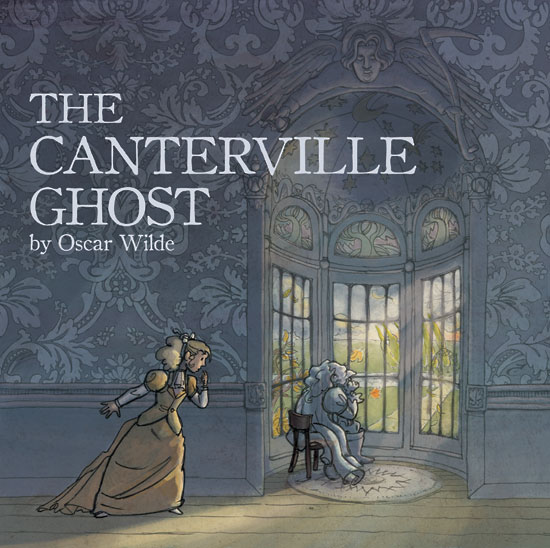
In his screenplay adaptation, Edwin Blum takes some elements from the original, but invents a lot, including a moral about overcoming your fears. (In fact, The Canterville Ghost contains a version of the line most commonly attributed to George Bernard Shaw: “ have really everything in common with America nowadays, except, of course, language.”) In Wilde’s hands, The Canterville Ghost is less ghost story and more gentle satire of the culture clash between England and America. The only American not terrified is 15-year-old Virginia, who bonds with the ghost, sympathizing with his plight. He revels in terrorizing others, recalling happily “the furor he had excited one lonely June evening by merely playing ninepins with his own bones upon the lawn-tennis ground.” This is ghost story as slapstick vaudeville. His ghost has since haunted the manor, bored out of his mind and mixing things up for himself by taking on a variety of “roles” (“the Vampire Monk,” “the Bloodless Benedictine,” “the Blood-sucker of Bexley Moore,” etc.). Centuries ago, Sir Simon killed his wife and, for his crime, her brothers starved him to death. Wilde’s original story starts when an American family moves into Canterville Chase, a huge manor said to be haunted. It sounds completely absurd! But it’s entertaining, too, with Laughton as the ghost of Sir Simon Canterville-sometimes transparent, sometimes corporeal-mooning around, yearning for the peace of the grave. In his wildest dreams Oscar Wilde could never have imagined that an adaptation of his story would involve Charles Laughton straddling a gigantic unexploded mine as it’s dragged across the countryside by an American jeep. Released just one month after D-Day, The Canterville Ghost takes place in the wartime world of the 1940s, and includes two elaborate battle sequences.


MGM’s 1944 film adaptation adds one more layer of hybridization. The ghost in question has frightened generations of people since then, but he’s really just a bored showoff looking for attention. Oscar Wilde’s novella The Canterville Ghost, published in 1887 in The Court and Society Review, is a spooky-comic hybrid.


 0 kommentar(er)
0 kommentar(er)
